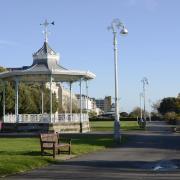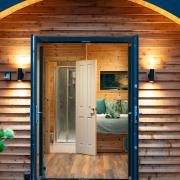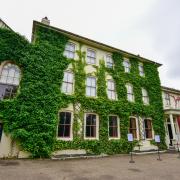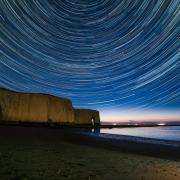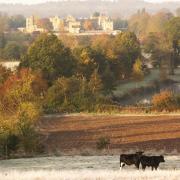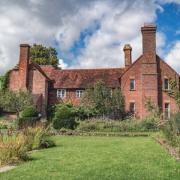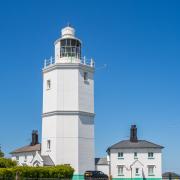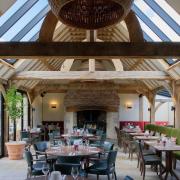'Anyone can drown, but no-one should do'
So says Peter Leigh, the middle of three generations of one family who’ve served on the RNLI’s Littlestone lifeboat. As the charity celebrates its 200th anniversary, Peter tells Stephen Roberts more about its vital work and his own role within it.
‘O hear us when we cry to Thee, For those in peril on the sea’. These words are from Eternal Father, Strong to Save’ (1860), a hymn traditionally associated with seafarers, especially those in the maritime armed services, but one that also has resonance for those operating in the civilian marine world - including the brave personnel of the RNLI.
Lifeboats existed before the RNLI, with the first purpose-built craft stationed at South Shields in 1790. It was almost another 35 years before the National Institution for the Preservation of Life from Shipwreck was established by Sir William Hillary, in March 1824. In 1854 the charity’s name was changed to the Royal National Lifeboat Institution (RNLI) and this year it celebrates its 200th anniversary.

The UK’s coastal communities, including Kent’s, know and respect the sea. In peacetime it provides pleasure and sustenance. During wartime it is our ‘moat defensive’, protecting us from foreign foe. During WW1, lifeboats were launched 1,808 times and saved 5,332 lives. This heroism was repeated in WW2, when another 6,376 lives were saved, with 19 lifeboats helping with the Dunkirk evacuation alone.
The scale of today’s operation is staggering. RNLI volunteer lifeboat crews and lifeguards saved 506 lives in 2022 alone and helped 39,680 souls. Tragically, around 140 people die annually in UK and Irish coastal waters and the RNLI’s vision is to save every single one of these. The RNLI works with communities and partners to try and prevent people getting into danger in the first place, with males over 15 most at risk. It is not just about the crew members braving the waters (of whom only one in ten has a maritime profession), there are thousands of dedicated fundraisers, too, plus volunteer shore crews helping with the launching and recovering of lifeboats.The 238 UK and Irish lifeboat stations cover19,000 miles of coastline, with 441 lifeboats (including relief-fleet vessels) and seven hovercraft. Kent is home to nine RNLI stations, from Gravesend to Dover.

Peter Leigh is the middle of three generations of one family who have served on the Littlestone-on-Sea lifeboat in the Hythe and Romney Marsh area of the county. This remarkable tale of unbroken service - beginning with Peter’s father, Pat, and continuing with his 18-year-old son, Samuel - has involved numerous lifeboats and seen many lives saved. Peter enjoys sailing and windsurfing, so the sea is part of his life.
'I was born in Islington in London but my association with Kent and the sea began early - I was one at the time - when my dad, Pat, got a job at Dungeness nuclear power station,' Peter explains. 'Dad who's now aged 83, learned to sail and navigate and soon started helping out at the RNLI.' A new inshore boat came into service in 1966, with Pat involved from 1967. 'It was all inflatables and RIBs back then, so nowhere near as safe as today’s craft are,' reflects Peter, 'And the training wasn't anything like today's, either.'

Having started with the RNLI at 22, Peter has now been involved for over 35 years. 'I’ve seen lots of crew members come and go as their lives develop, with changes of occupation, children coming along and so on.' Peter says that his own stable job as a shift-worker at the power station has effected the way in which he's been able to commit to the RNLI. 'I'm employed rather than self-employed, and due to nature of my work, I can’t just leave when something happens,' he explains. 'So basically, I’m not on call if I’m working.'
While Peter is currently one of three commanders at the station ('we need one commander on the boat at any given time - two others are currently in the process of being trained') he's filled a number of RNLI roles over the years. 'I began as shore crew for a few weeks before becoming a crew member, then I was a helmsman around the late 1990s, and I've been our training officer for several years. I also did ten years with the RNLI’s International Flood Rescue Team, now disbanded, which saw me going around the UK, dealing with coastal and inshore flooding. I've been overseas, too - in 2005, for instance, I was in Guyana in South America as part of "Operation Floodgate"'.

Last year saw some 35 ‘shouts’ (responses to maritime emergencies), with around 50 in 2022. 'We occasionally get tasked by HM Coastguard to help with rescuing small-boat Channel crossings, although our inshore boat is small capacity, meaning that, for large numbers, a bigger boat is usually needed. We help whoever is in distress the best we can. The whole team has the same attitude: we all believe that anyone can drown, but no one should. Our mission is to save everyone, so we are aiming very high.'
Thankfully, these days the crew can rely not only on their own skills but on the latest technology. 'We’ve got good boats with vastly improved engine reliability, plus electronic wizardry that we didn’t have in earlier days. Where once the crew relied for communications on Decca, a leftover from WW2, it's today been superseded by GPS. Comms systems in our helmets, too, mean we can talk to one another without shouting. Most of this has equipment has only really come in over the last few years.'
Peter confirms that the RNLI is always seeking new crew members, particularly volunteers with daytime availability. 'Finding cover when people are working during the day can be difficult, which makes self-employed people and shift workers handy'.

RNLI lifeboats are no longer a male preserve, with the first woman qualifying to command a lifeboat in 1969. 'Having a mixed crew is very beneficial. Women add balance and calmness to crews and have a very positive impact on how we operate. One of our three commanders, Heather, is the first female commander at Littlestone RNLI in its over-100-year history. She's brilliant.' A range of ages is welcome too, with some of the younger crew members especially good, Peter says, at handling technology. The key thing is a willingness to learn: 'We will teach anyone what they need to know and you don’t have to come from a marine background. After all, my own dad Pat was a steeplejack and steel erector.'
The ‘shouts’ that Peter and the RNLI crew respond to can certainly be varied. 'We’ve had missing children, people getting blown out to sea on inflatables, fishing vessels in trouble, even a drunken person who’d stolen a yacht. We take everyone as they are and there’s never any judgement involved in rescues. We had someone with mental health issues rowing a boat three miles out to sea at 10 oclock at night in the dark.We sat with him for three hours before he was eventually persuaded to board the Dungeness lifeboat.We couldn’t leave him.'
Of course, there are lighter moments, too. The crew were once called out rescue what were believed to be two people in trouble. Says Peter: 'It turned out to be a two-seat sofa bobbing up and down in the waves!''

The cost of running the RNLI in 2022 was £188 million. Of every £1 raised, 81p funds lifesaving activities, with the remainder used to generate more funds. Says the charity, 'The RNLI is independent of the government - less than one per cent of our funding comes from government sources. Our lifesaving service depends on the kindness of our supporters - 94 per cent of our total income comes from donations. The remaining six per cent comes from income sources such as trading and investments.'
To support this vital and worthy institution ‘for those in peril on the sea’, see rnli.org- look out, too, for activities celebrating this, its 200th year.








